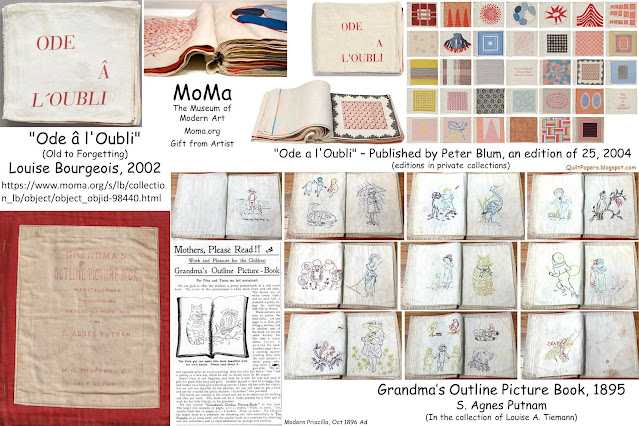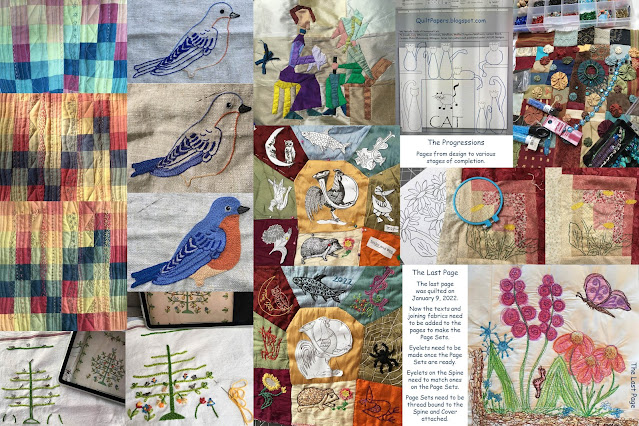The Tulsa Tribune 22 Nov 1932, Tue, Page 2 – New Quilt Starts Sunday
“Directions will be given daily … It is to be a patch-work quilt … In the Galaxy quilt, each piece is a single solid color two inches square. … There will be 48 blocks in the quilt and the entire quilt will be approximately 78 by 98 inches in size.”
The Tulsa Tribune 23 Nov 1932, Wed, Page 4 – Colors in Galaxy Quilt
“It is suggested that the Galaxy Quilt design be worked out in flame red, ultramarine blue, apple green and golden yellow”
The Tulsa Tribune 25 Nov 1932, Fri, Page 10 – Unusual Design of the New Tribune Quilt
“Each day The Tribune will publish a small chart showing the color combination in one of the blocks. Each color used in the quilt will be known by a number and always 1 will stand for flame red, 2 for ultra marine blue, 3 for apple green and 4 for golden yellow. … Each color piece to be cut two and one-quarter of an inch. The quarter of an inch is to be used for the seam and the block will be two inches square when sewed to the other pieces. Each block will measure eight inches square when finished and be joined to the other blocks by a two inch strip. … It will require two yards of material 36 inches wide, of each color in the quilt.” [Note if a standard one-quarter inch seam allowance is used, the squares need to be two-and-one-half inches square.]
The Tulsa Tribune 27 Nov 1932, Sun, Page 1 – Galaxy Quilt
“Hereafter there will be a block a day for 48 days, instead of a block a week as formerly in The Tribune.” [Note, some days were missed here and there, so took longer that 48 days.]
Block One appeared on Sunday, 27Nov1932 and indicated that the joining strip should be egg shell in color and joining square white. The next day, Blocks One and Two were given with the color mapping numbers. Copyright 1932 Forrest Rees appears with the illustration. Charts for previous blocks could be had by sending a self-addressed stamped envelope and one cent for each desired chart.
Block Chart for 24 is missing – Newspapers.com does not have the 23Dec1932 edition, which I suspect the design is in.
The last chart for Block 48 was published on 22Jan1933. Several years later, in 1941, a reader was looking to buy the patterns for the Galaxy Quilt.
QUILT INDEX RECORD 38-36-1177
Finished quilt: 72 x 91 [Versus 78 by 98 given in the pattern]Predominant Color(s): Red; Blue; Green; [and yellow]Block pattern: 16 patch; Number of quilt blocks: 48Size of quilt blocks: 8 inches; Sashing width: 2 inchesQuilt maker's name: Palmer, Louella Starr StalkerWhere the quilt was made, Collinsville, OK
The Peggy Lynn Column was written by Tribune Staff. The column started in the early 1920s. It is one of a couple of papers that adopted other syndicated columns and quilt patterns and replaced the names with their own – Peggy Lynn. The Nancy Page column (Laganke/Kerven) was adopted in February of 1928 with the familiar image used to introduce the column, but with Introducing Peggy Lynn in the Daily papers. Previously the Peggy Lynn column was on Sundays. The Nancy Page Grandmother’s Flower Garden quilt was introduced by Peggy Lynn. No mention of Nancy Page, LaGanke or Kerven. They did have one slipup that I found that mentioning getting a Nancy Page leaflet, usually Peggy Lynn was substituted. So the Nancy Page Quilt Club became the Peggy Lynn Quilt Club with patterns published on Sundays and the daily column disappears.
After the completion of the Flower Garden quilt, Peggy Lynn ran the McKim State Flowers quilt, once again replacing Peggy Lynn where McKim would have been in the text. The patterns appeared on Sundays once again. Once that series ended, the Galaxy quilt started. The Peggy Lynn column continued on Sundays into the early 1940s.

















